Montana Movies: The Runaway Train of "Broken Arrow"
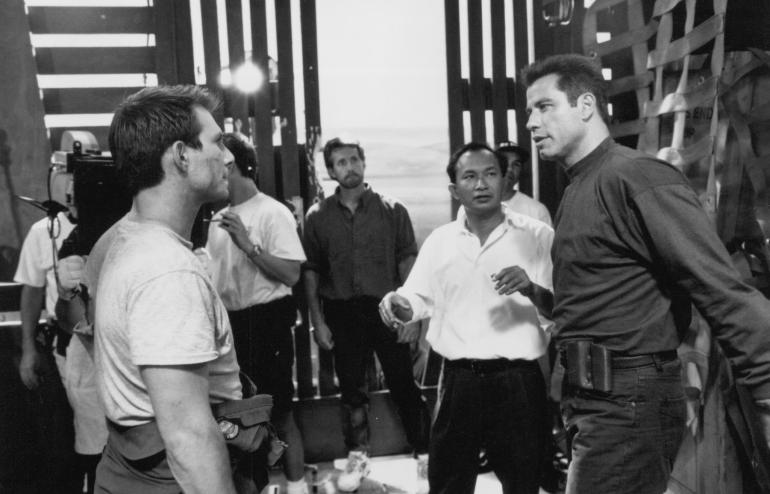
John Travolta is the unusual example of a movie star who has had not only one career petering out followed by an impressive comeback, but two discernable cycles of both.
After skyrocketing to fame with Saturday Night Fever (1977) and Grease (1978), only to fall by the wayside by the mid 80s, his career received a jumpstart by his turn in Quentin Tarantino’s Pulp Fiction (1994). The 90s and early 2000s saw a string of lucrative, if not always well-reviewed, star vehicles for Travolta. By 2010 the wheel of fortune had turned again, finding him cropping up in straight-to-DVD quality fare likely to be noticed only by the Golden Raspberry Awards. It would be fascinating to see if he can manage a third comeback, though the present odds for that seem a bit long.
Broken Arrow (1996) hails from the second Travolta high ride period. An action flick helmed by Hong Kong director John Woo, it was a sizable box-office success at the time of its release, but has left a negligible cultural footprint in the ensuing decades. Woo and Travolta’s follow-up vehicle, Face/Off (1997), has had a surprisingly robust afterlife in the social media age, though its currency is largely due to co-star Nicolas Cage; that film’s over-the-top absurdity was tailor-made for Cage’s contemporary status as a Human Meme. Travolta hasn’t opted to embrace full on meme-hood like Cage has, which is interesting, since Broken Arrow totally has all the ingredients for that to happen. Its cranked up silliness and operatic over-determination, to which Travolta’s all-stops-pulled stab at sinister villainy is a major factor, could easily have it be fodder for a drinking game (“take a shot at the next extreme eye close-up”).
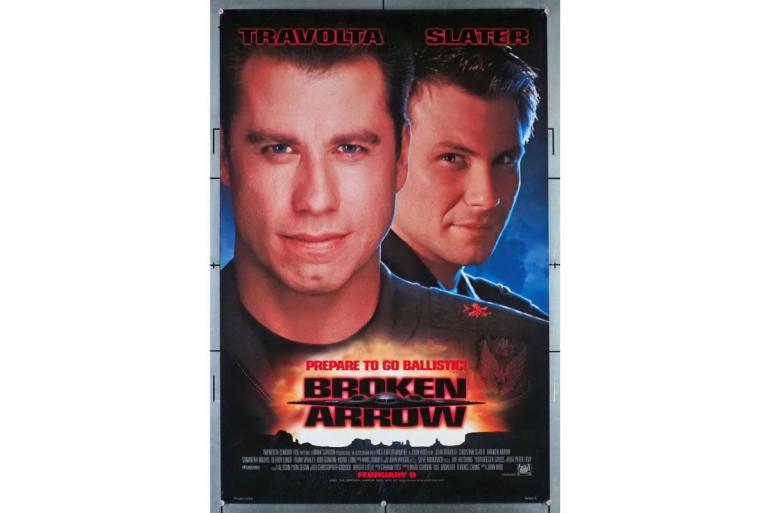
But even taken on its own terms, the movie still offers schlocky entertainment. Viewers with an appetite for ham and cheese will certainly have it satisfied. That the climactic train action sequence offers glorious Montana scenery serves as the beer-like swig to wash it all down.
The movie opens with a boxing match between Maj. Vic “Deak” Deakins(Travolta) and Capt. Riley Hale(Christian Slater, somehow stranded between too bland and not bland enough); Hale is bested by his longtime mentor, assured that “you don’t have it in you to win”. Hale forfeits a twenty-dollar bill, conveniently providing a recurring signifier for the sub textual dick-measuring contest undergirding the conflict to follow. Deakins and Hale are assigned to a top-secret mission piloting a stealth bomber carrying nuclear weapons over the Utah desert (Glen Canyon National Recreation Area, it should be noted, with the Mojave Desert and Lake Powell making special appearances). But Deakins is actually a traitor who plans to steal the nukes and sell them to the highest bidder in Europe; his peculiarly specific motivation is to own five percent of the shares in Volvo stock. Maybe world domination seemed too old hat? Hale is jettisoned from the aircraft after a brief struggle, but manages to survive, and sets off to stop his erst-while father figure. Oh, there’s also Terry Carmichael (Samantha Mathis), the Park Ranger who teams up with Hale for the purposes of providing an extra hand in fights, as well as to provide our hero with a potential l love interest, though that eventuality never arrives in the film. That Slater and Mathis had been a real-life romantic couple but were broken up by the time the movie was shot may or may not have something to do with this script choice. Mathis has been quoted as saying that kissing him was like “kissing my brother”. In that case, let’s focus on fighting.
John Woo was the first Asian filmmaker to direct a mainstream Hollywood action movie—Hard Target(1993)—, though he had American fans long before that, Sam Raimi and Tarantino among them. Having honed his penchant for balletic fight choreography (in line with the tradition of wuxia martial arts cinema) mixed with frantic gun battles in the films he made in Hong Kong (often with Chow Yun Fat), big budget American movies seemed a natural progression. Broken Arrow has the gun battles with lots of artful, near-flying leaps through the air, but also throws in one body used as campfire fuel—albeit accidentally—, two encounters with a rotating helicopter blade—one squelchy, one less so—, at least four instances of having to defuse an atomic device with conveniently large buttons including one for “cancel” on the front, and more giant explosions than can easily be counted. There’s also an easy half-dozen instances of Travolta seeking to convey menace by issuing ultimatums to his underlings through clenched teeth, which honestly put me in a mind of frustrated dog desperate to get the marrow out of a huge bone. The last thing this performance could be described as is “subtle”, but considering the go-for-broke ethos elsewhere, it tracks. Woo aficionados will take note that there are, alas, no doves (they probably had to be saved for Face/Off). But there are butterflies to serve as the winged heralds of salvation.
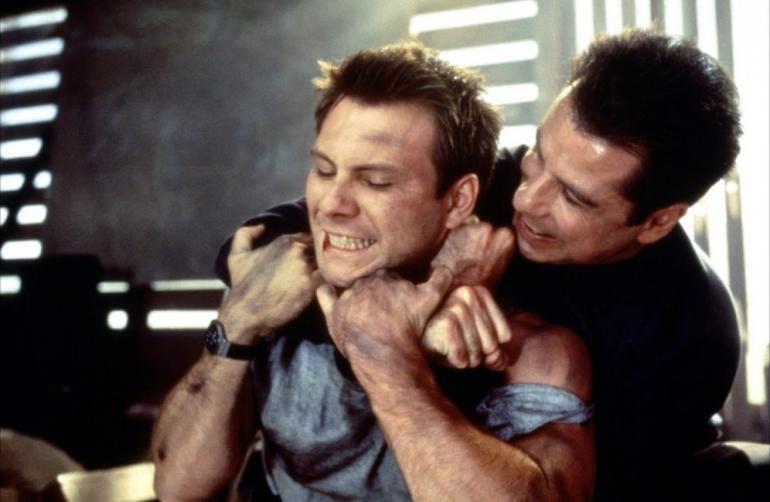
Oh, and there’s also the climactic set-piece on a train Deakins has hijacked. The film positions the action outside of Denver, but in reality it was shot between Lewistown and Denton, Montana on the privately owned Central Montana Rail, Inc (CM).
Several custom built train cars were sent to Lewistown for the film. Principal photography for the sequence took six weeks, with completion at the end of August. The Treasure State’s vistas make for strikingly photogenic backdrop, including the railroad bridge that comes into play for a few dramatic exits.
It may not be as iconic as the battle between Sean Connery and Robert Shaw in From Russia With Love (1963), but it sure makes for a whiz bang climax.
So if you and your crew are in need of an evening of explosive excitement with hefty portions of amusement, consider Broken Arrow, perhaps as a double bill with that Cage vehicle.
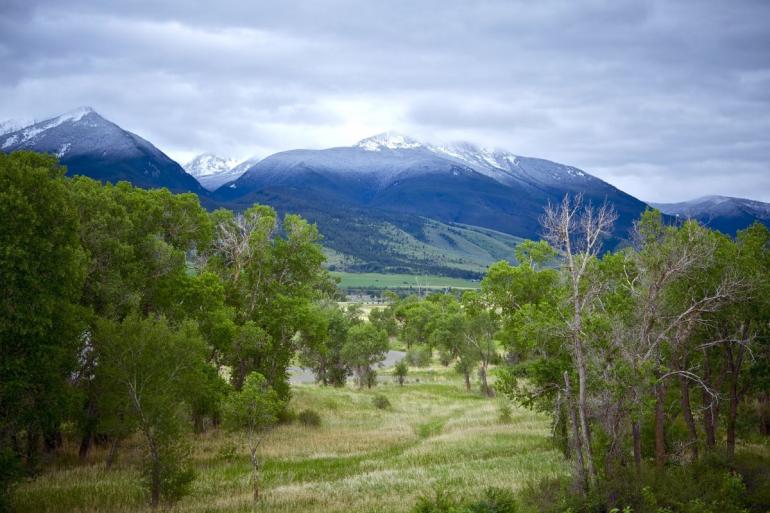
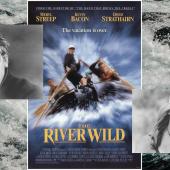
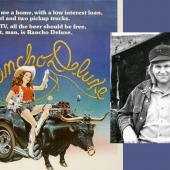
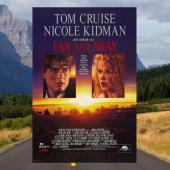
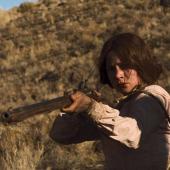
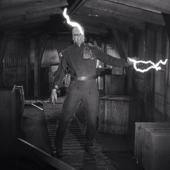
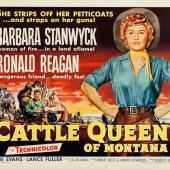
Leave a Comment Here